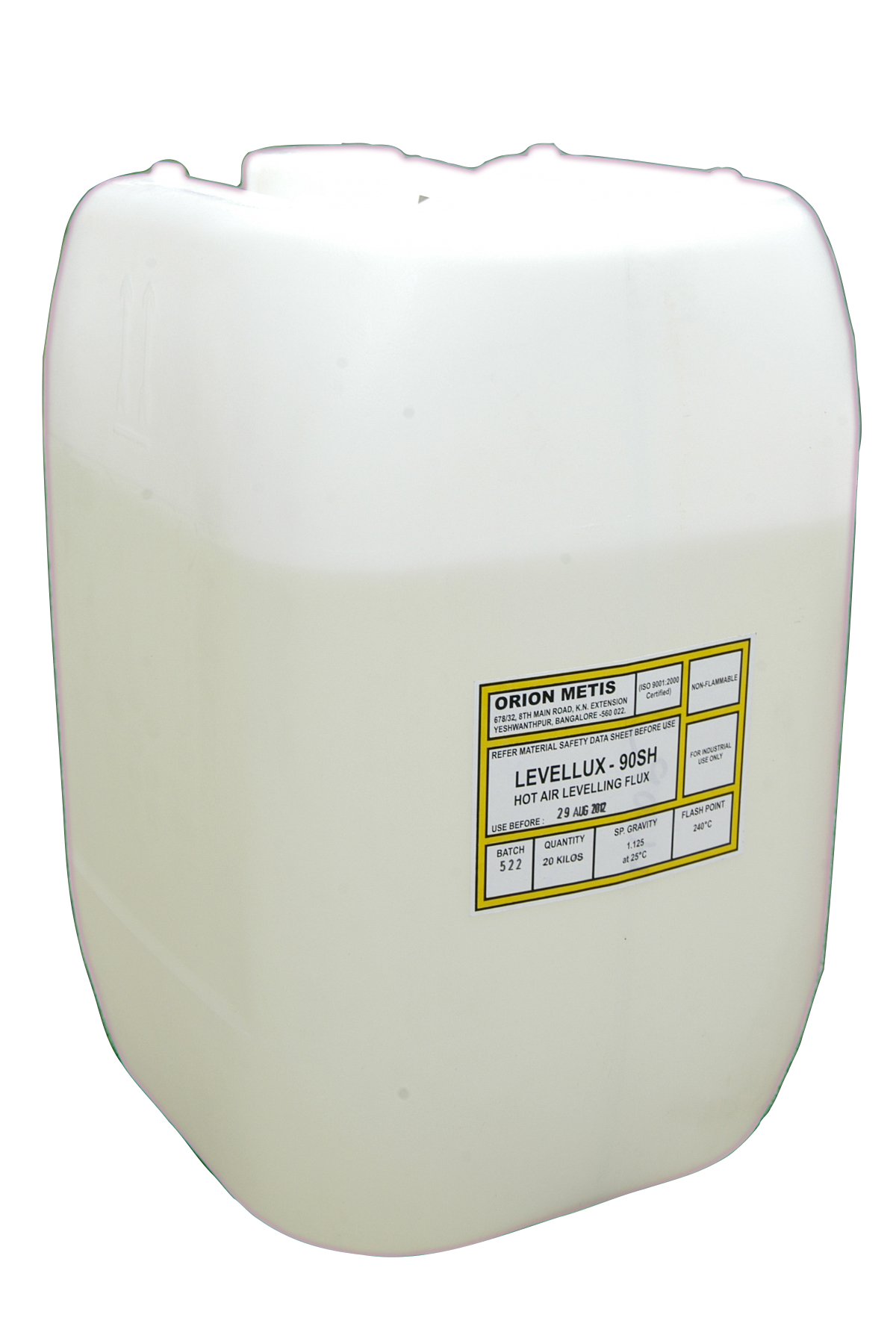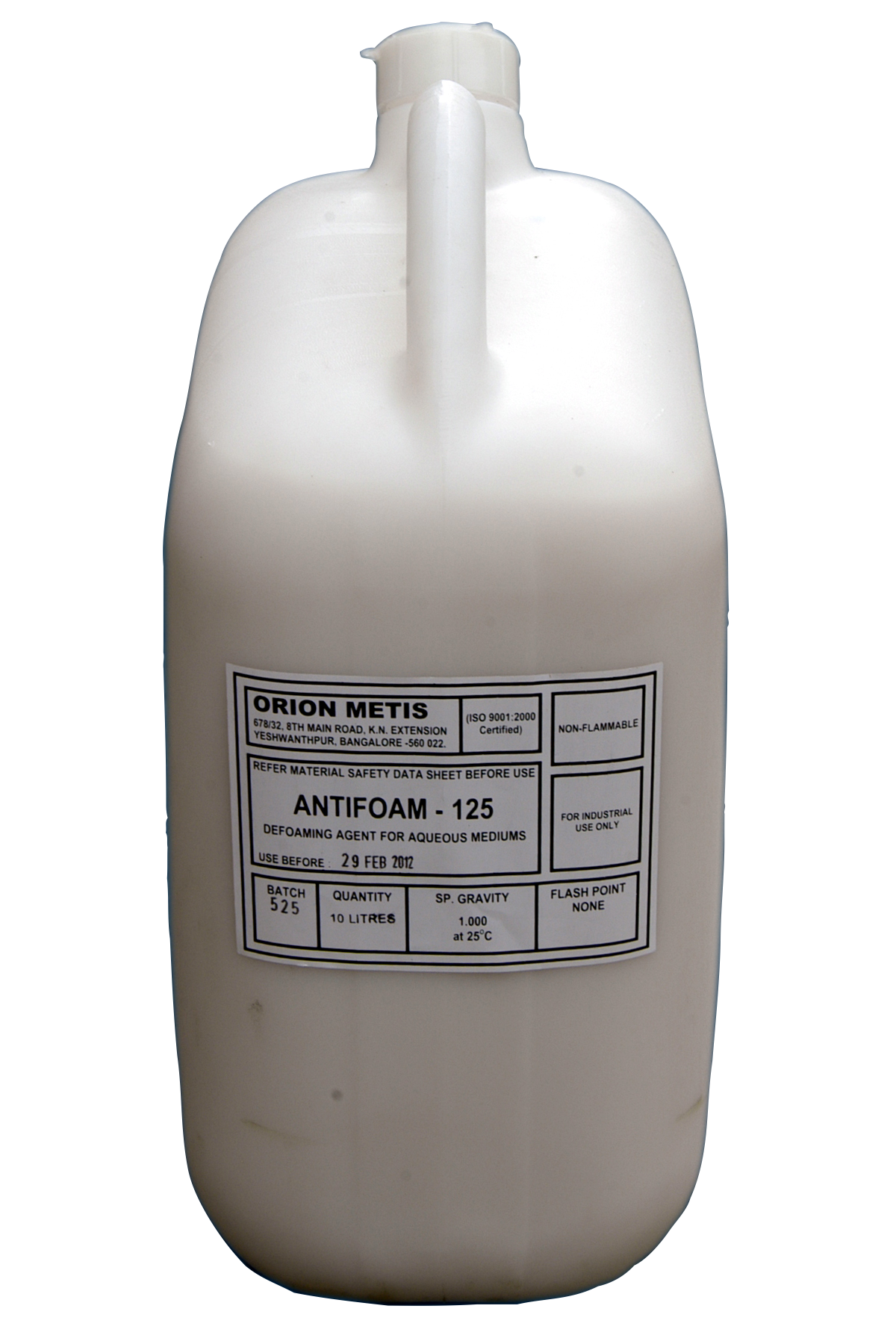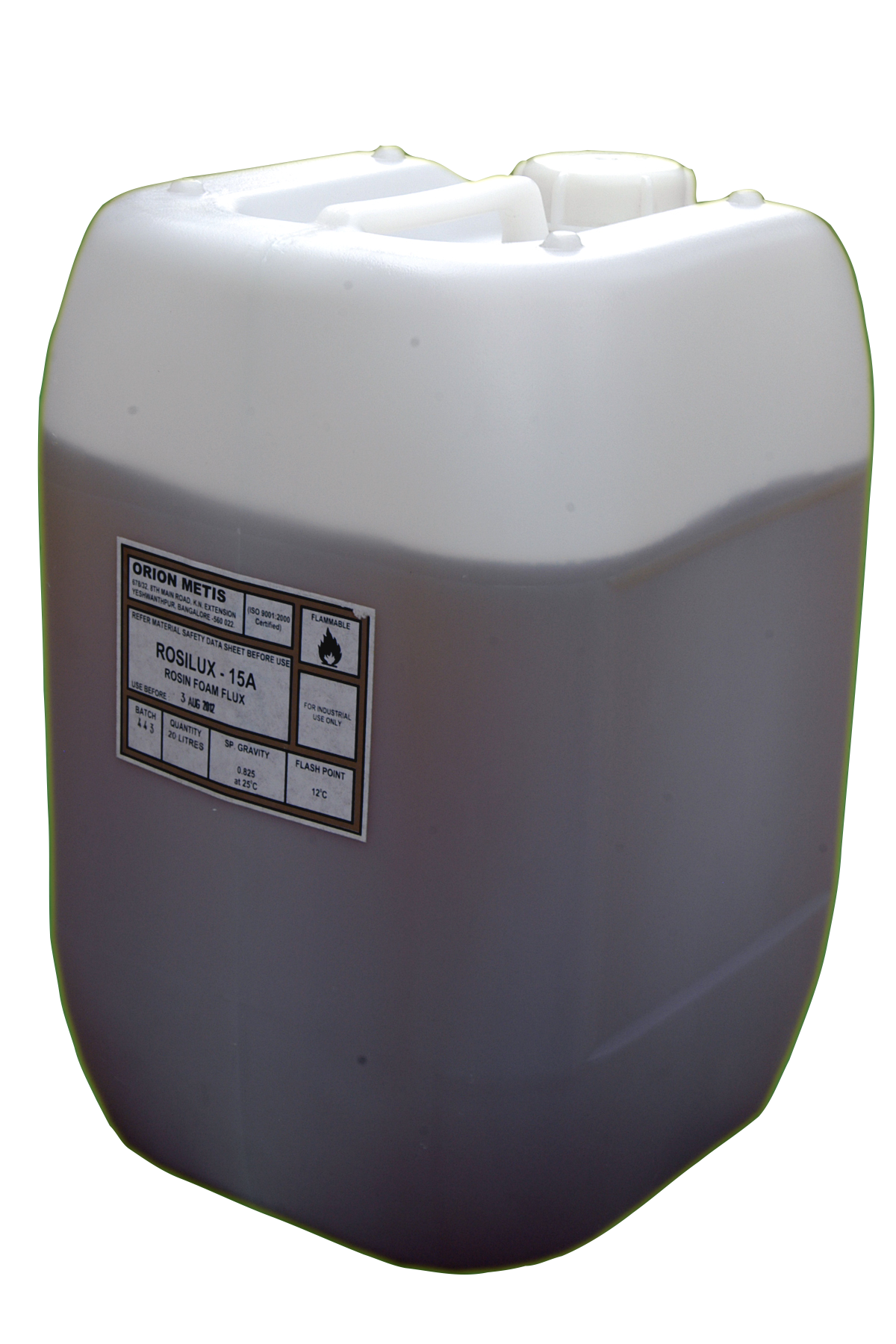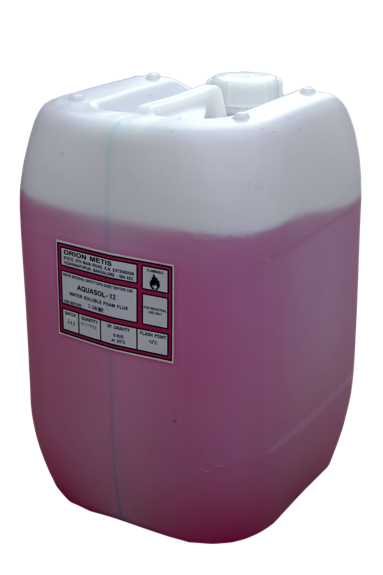
Levellux-70 & 85 HAL Fluxes: These fluxes are suitable for Hot Air Levelling of exposed copper areas (SMOBC) of PCB's in Hot Air Levelling Machines. Levellux-70 contains alcohol to reduce the viscosity wheareas Levellux-85 is a medium viscosity flux. Both are suitable for Tin-Lead and Lead Free HAL.
Levellux-90 SH is a low viscosity Polyglycol based flux suitable for both Tin-Lead as well as Lead Free HAL. This popular flux of medium activity is used for both PTH and SMD boards. Other variants of HAL fluxes such as Levellux-70A, Levellux-80 with differing viscocities and activity levels are available. Levellux-70N & 85N are neutral versions of Levellux-70 & 85.
Levellux-10 & 20 are viscous fluxes with high thermal stability formulated for lead free HAL. Based on imported Polyclycols, they are more expensive than other fluxes.

Antifoam-125: Antifoam-125 is a silicone based defoamer formulated for use as defoamer in dry film and solder mask developing as well as stripping solutions. It is an effective defoamer at low concentrations and is completely dispersible in water.
Antifoam-200 & 300: Antifoam-200 & 300 are non-silicone defoaming agents for foam control in developing & stripping solutions used in processing dry film photoresists in PCB manufacture. These defoamers do not contain any solvents.
Surprol-20 & 40 are very effective Lacquers for protecting exposed copper surfaces of single sided PCB's after manufacture as a final finish to prevent the copper surfaces from tarnishing and contamination. Surprol-20 is suitable for manual application whereas Surprol-40 is meant for roller coating and gives a thicker film.
Surprol-37 RC is a specially developed variation using a different solvent blend for application by roller coating machines. The lacquer has slower drying properties which prevents it from drying on the rollers of coating machines. This extremely popular lacquer is used extensively by many large single sided PCB manufacturers.
Surprol-50 & 50 RC have been developed exclusively for protecting the copper circuits of single sided MCPCB's used in LED power lighting. The lacquer forms a transparent & colourless non-yellowing film on the copper SMD pads and white solder mask after solder reflow. Surprol-50 is meant for manual application and Surprol-50 RC for roller coating applications.
Thinner for Lacquers: TH-20 thinner is recommended for use with Surprol-20, 40 and TH-50 for Surprol-50 lacquers to reduce the specific gravity of lacquers which thicken due to solvent evaporation during use. For Surprol-37 RC & Surprol-50 RC the recommended thinner is TH-37.
Coatsol-15: Coastal-15 is used for solder coating copper conductors and pads of single sided PCB’s using a roller tinning machine.Its extremely active flux constituents impart an excellent cleaning action on the copper surfaces dissolving tarnish layers and ensuring an even, smooth coating of solder.
Coatsol-20: Coastal-20 is a variation which is more acidic and active than Coatsol-15.

NC-602 & 608 are low solids, halide free no cleanfluxes which provide clean boards free from wet, tacky or corrosive residues after wave soldering. Both the fluxes are non-rosin and non-corrosive having excellent solderability even on bare copper surfaces. The fluxes are RoHS compliant, meet J-STD-004 specifications and suitable for both Tin-Lead and Lead Free wave soldering.
NC-612 NO CLEAN FLUX provides defect-free soldering even with components and pads that do not have high solderability. The flux is an active, medium solids, no clean flux containing a small percentage of rosin along with other activators. NC-612 leaves a low level of slightly glossy residue after wave soldering, which can be electrically tested without problems. The flux is suitable for both Lead Free and Tin - Lead soldering and is RoHS compliant. The flux meets the requirements of J-STD-004 specification.
NC-614 is a VOC (Volatile Organic Compound) Free NO CLEAN FLUX formulated for high quality, low defect soldering of electronic circuit board assemblies. The flux does not attack properly cured solder mask or FR-4 glass-epoxy laminate and leaves a very low level of residues after soldering. The residues are non-corrosive, non-conductive, does not require removal and can be pin-tested without interference.

Rosilux-15A: Rosilux-15A is a conventional flux used primarily for wave soldering of PCB’s in the electronic industries. The flux gives excellent solder joints free of icicles and bridges even at high production speeds. This is a halide activated flux still preferred by some electronic industries over the No Clean Fluxes. Rosilux Fluxes are also available in plain Rosin (R), Rosin Mildly Activated (RMA) with low or high solids content and Halide free activated types.
Rosilux-36 RMA flux has been developed exclusively for high reliability soldering in the electronic industries particularly for the soldering of insulated copper wires to the leads for the transformer industries manufacturing miniature transformers.The flux has very low activity and the activator system is totally free from halides. In view of this, the residues after soldering may be safely left in the joints without cleaning. In addition the high insulation resistance of the residues makes the flux very ideal for use in all high reliability electronic soldering applications.

Aquasol 10 & 20 containing Non-volatile contents of 10% and 20% respectively are organic activated water soluble fluxes for wave soldering in the electronic industry. They are extremely active fluxes that promote rapid and efficient soldering of even the most difficult-to-solder components. The conductive and potentially corrosive nature of the residues makes it mandatory to clean with water after the wave soldering operation.
Aquasol-10C is a more active variation of Aquasol-10
Aquasol-12: Aquasol-12 is an active flux containing more activators and has a Non-volatile content of 11%.
Arcolux Dip soldering Flux is suitable for dip soldering where a more active flux is called-for than the regular Rosin-based and water soluble fluxes. On account of its higher activity and ionizable nature of the residues, mandatory water cleaning following the soldering operation is needed.
TH-70,70A,71,76 & 78 Thinners are recommended for use to restore the specific gravity of fluxes which thicken due to solvent evaporation during use. TH-70 is used with Rosin based fluxes, TH-70A with water soluble fluxes, TH-71 with NC-602 No clean flux, TH-76 with NC-612 No clean flux and TH-78 with NC-608 No clean flux.
Antiox-20: Antioxidant Oil is suitable for using in the solder pot of wave soldering machines as well as in dip soldering baths. The oil covers the solder surface & forms a barrier preventing atmospheric oxygen's contact with molten solder which minimizes oxidation leading to formation of Dross.
Kleenol-10,10M & 50 are alcohols effective in completely removing rosin and activators which remain after soldering with rosin fluxes and organic acid based no clean fluxes. The polar nature of the alcohols dissolves ionic contaminants which can cause current leakage and corrosion under humid environmental conditions.
Kleenol-10 is commercial grade isopropyl alcohol with very low water content. Kleenol-10M & 50 on the other hand are blends of alcohols formulated to reduce the cost of isopropyl alcohol though equally effective in cleaning efficiency. The cleaners are suitable for manually cleaning with brushes.
Aquaclean-100 has been formulated for effectively removing rosin flux residues through saponification and converting the rosin into a water soluble soap. Since water can be used for cleaning, considerable savings in cost on expensive solvents is experienced.